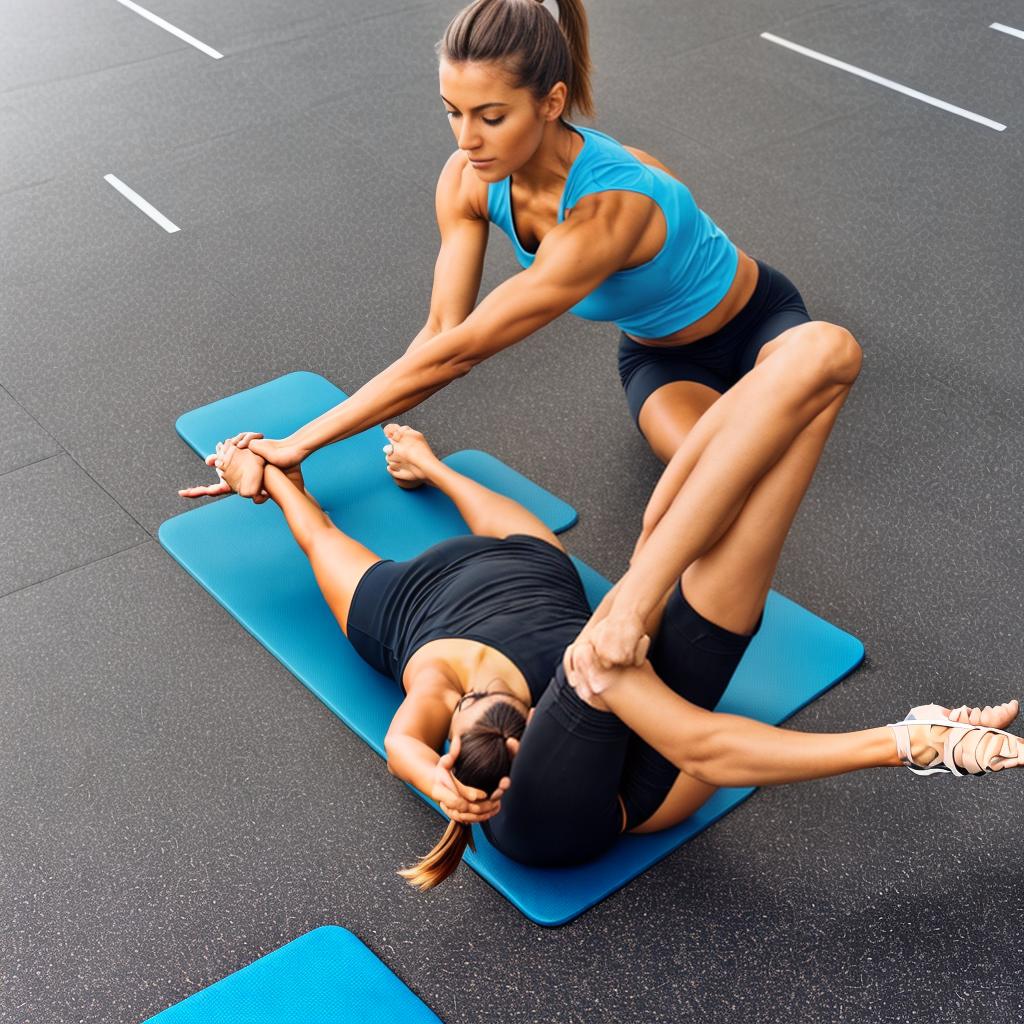In the quest for a healthier and more active lifestyle, many of us focus primarily on cardiovascular endurance and strength training. While these aspects of fitness are undoubtedly crucial, one key component often overlooked is flexibility. Flexibility plays a vital role in overall fitness and well-being, and incorporating it into your exercise routine can lead to numerous benefits. In this article, we will delve into the importance of flexibility and explore ways to integrate it into your fitness regimen.
Understanding Flexibility
Before we delve into the benefits and ways to enhance flexibility, it’s important to understand what flexibility is. Flexibility refers to the range of motion of your joints and muscles. It determines how easily you can move a joint or muscle through its full range of motion. Flexibility can vary greatly among individuals, and it can be influenced by factors such as genetics, age, and physical activity levels.
The Benefits of Flexibility
1. Improved Range of Motion
One of the most apparent benefits of flexibility training is an improved range of motion. When your muscles and joints are more flexible, you can move more freely and comfortably. This increased range of motion can enhance your daily activities and sports performance, reducing the risk of injury.
2. Reduced Risk of Injury
Regular flexibility exercises can significantly reduce the risk of injuries, particularly strains and sprains. When your muscles are more flexible, they are less likely to become tight and prone to injury. This is especially important for athletes and individuals who engage in intense physical activities.
3. Enhanced Posture and Balance
Flexibility exercises can improve your posture and balance. When your muscles are flexible, they can better support your spine and help you maintain a more upright posture. Improved balance is especially important as we age since it can help prevent falls and related injuries.
4. Alleviation of Muscle Tension and Pain
Flexibility exercises can help alleviate muscle tension and reduce chronic pain. Tight muscles can lead to discomfort and pain, which can be relieved through targeted stretching and flexibility exercises.
5. Stress Reduction
Flexibility exercises, such as yoga and tai chi, often incorporate relaxation techniques that can reduce stress and promote a sense of calm and well-being. The combination of stretching and deep breathing can have a profound impact on your mental and emotional health.

Incorporating Flexibility into Your Routine
Now that we’ve highlighted the importance of flexibility, let’s explore how to incorporate it into your exercise routine effectively.
1. Stretching
Stretching is the most common form of flexibility exercise. It can be done before or after your regular workout. Static stretching involves holding a stretch position for a set period, while dynamic stretching involves moving through a range of motion. Incorporate both types into your routine for optimal results.
2. Yoga
Yoga is an excellent way to improve flexibility while also promoting relaxation and mental well-being. There are various styles of yoga, from gentle and restorative to more intense and physically demanding. Choose a style that aligns with your goals and preferences.
3. Pilates
Pilates is another low-impact exercise that focuses on core strength and flexibility. It can help you develop long, lean muscles and improve your overall flexibility.
4. Foam Rolling
Foam rolling, or self-myofascial release, involves using a foam roller to massage and release tight muscles. It can be an effective way to alleviate muscle tension and improve flexibility.
5. Tai Chi
Tai Chi is a martial art that combines slow, flowing movements with deep breathing. It enhances flexibility, balance, and mindfulness. Tai Chi is especially suitable for older adults looking to maintain their flexibility and overall health.
FAQs
Q1. How often should I incorporate flexibility exercises into my routine?
A1. Ideally, you should aim to include flexibility exercises at least 2-3 times a week. However, you can do some form of stretching or flexibility work every day if it feels comfortable and beneficial for you.
Q2. Can I improve flexibility if I’m not naturally flexible?
A2. Yes, flexibility is trainable, and anyone can improve their flexibility with consistent effort and the right exercises. It may take time, so be patient and persistent in your practice.
Q3. Is stretching before exercise necessary, or can I do it afterward?
A3. Both options can be effective. Some studies suggest that dynamic stretching before exercise can help improve performance, while static stretching is often more suitable after exercise to improve flexibility.
Q4. Are there specific flexibility exercises for different muscle groups?
A4. Yes, you can target specific muscle groups with flexibility exercises. For example, hamstring stretches can improve the flexibility of your hamstrings, while shoulder stretches focus on the shoulder muscles and joints.
Flexibility is a crucial aspect of fitness that often goes overlooked. By incorporating flexibility exercises into your routine, you can enjoy a wide range of benefits, including improved range of motion, reduced risk of injury, better posture and balance, reduced muscle tension and pain, and stress reduction. Whether you choose to stretch, practice yoga, or engage in other flexibility-focused activities, you’ll be taking a significant step toward a healthier, more active lifestyle. So, remember to make flexibility a priority in your fitness journey for overall well-being and longevity.
